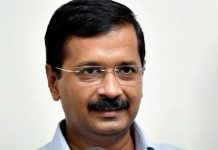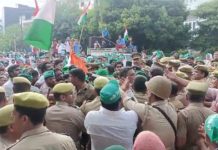Why is performance artist Nikhil Chopra more famous internationally than in India, asks Aastha Atray Banan

IT’S A good thing that Nikhil Chopra is a dandy. Being stared at all day would make feebler mortals quaver. In his latest act, “Drum Solo”, the performance artist became a star drummer boy at Chatterjee and Lal, transforming the Mumbai gallery’s white interiors into a black lounge. For five hours daily, from March 15 to 19, Chopra thrashed a drum kit to an inch of its life — with no intention to make music: “That’d make it less interesting. Making sound: now that’s what matters,” grins the 35-year-old. “I’m working with an idea unknown to me. I’ve never been so loud! But it does what’s necessary: amplify improvisation.”
Mortimer Chatterjee of Chatterjee and Lal, which also hosted Nikhil’s works in 2007, says, “Performance art draws a wide cross-section of people — regular gallery goers, people from the film and theatre world and art students who want to see new practices. In ‘Drum Solo’, Chopra is playing a celebrity rockstar, and there’s an element of danger, as this concept could fall flat on its face. It could also be a critique of the acknowledgement an artist gets.” He wryly notes, “Usually, art shows only get covered if there was a great party along with them.”

Photo: Deepak Salvi
A performance artist creates a ‘living picture’ by inserting himself into still and video backdrops. The method first became popular internationally in the 1960s with artists like Yves Klein and Yoko Ono, but it’s still new for Indians — which might explain why Chopra is more famous outside India than in his native land. The New York Times Magazine has called Chopra’s performances “enchanting”, theChicago Art Magazine described how “he held power” over his audience, and London’s ArtReview listed him among their 30 most important emerging artists in March 2009. But Nikhil is certain that Indian audiences are dying to welcome something different. As art critic Nancy Adajania says, “He has been an exception to the malaise of complacency in the Indian art world.”
Chopra entered the world of performance art during his MFA at Ohio State University, when the Punjabi boy from Jammu invented a character called Sri Raja. For a performance called “Sri Raja III at Khowaja Press”, he sauntered through Delhi’s walled city in regal costume towards an Urdu printing press. His other success was with “Yog Raj Chitrakar: Memory Drawing”, which follows a Victorian draughtsman. He shaved off all his body hair publically, even performing as a drag queen.
Sometimes during a performance, Chopra confesses, he does ask himself, “Why am I here?” Audiences, he says, “want to keep the illusion alive as they want to enter an artist’s world. I don’t look at them but through them. After a while, they become comfortable to stare at me freely, and then suddenly I am an object.”
For Chopra, the best thing about his works could be how he gets to live out his dreams: “I have license to do anything and be anyone. I once got supremely drunk! I also got to play drums, which I’ve wanted to do since I was a kid. I was a rockstar for just that moment. Now, ain’t that a great feeling?” Might be better to ask: sounds like teen spirit?
aastha@tehelka.com











